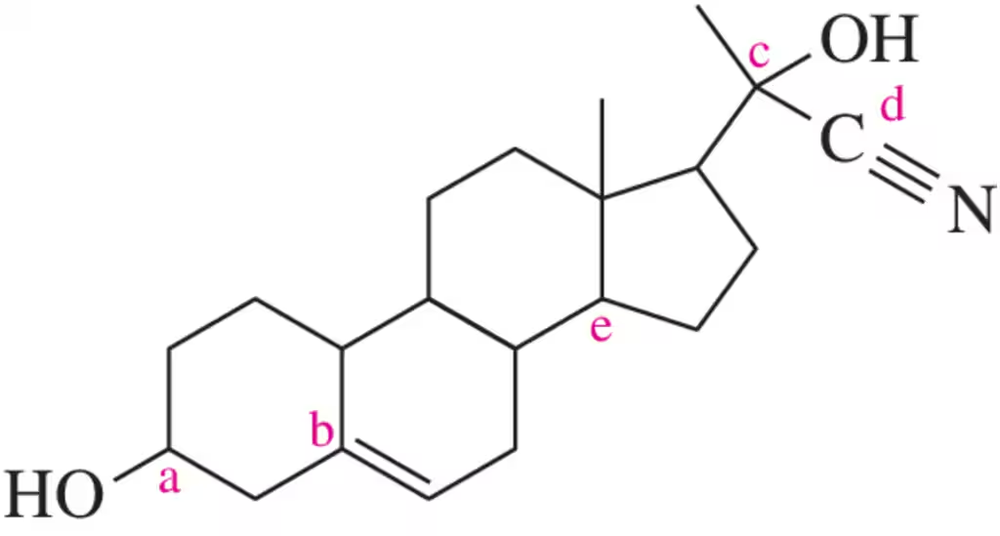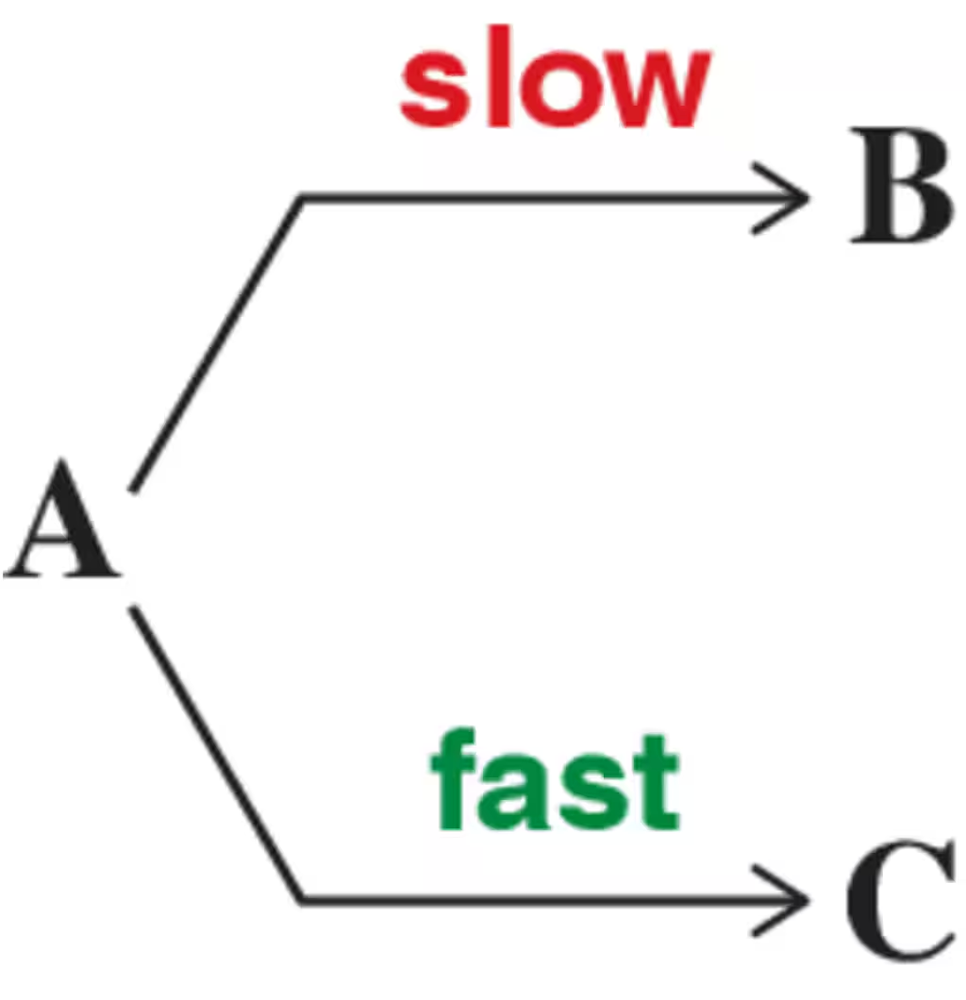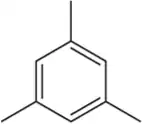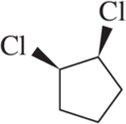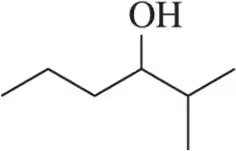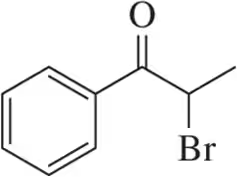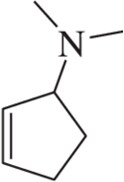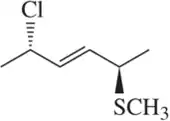 Back
BackProblem 1
Show all possible constitutional isomers of C5H12O. Label them as functional, positional, or chain isomers.
Problem 2c
Convert the following structural formulas to line-angle drawings
(c) CH3CH2NHCH2CH2OH
Problem 4
Predict the shape and hybridization of the indicated atoms.
Problem 5a
What type of isomerism is indicated by each of the following pairs of molecules? Be as specific as possible.
(a)
Problem 5b
What type of isomerism is indicated by each of the following pairs of molecules? Be as specific as possible.
(b)
Problem 5d
What type of isomerism is indicated by each of the following pairs of molecules? Be as specific as possible.
(d)
Problem 5e
What type of isomerism is indicated by each of the following pairs of molecules? Be as specific as possible.
(e)
Problem 6a
The molecule A undergoes a three-step reaction to make B, where the first step is rate determining. Conversely, C can be produced by A in a two-step reaction where the second step is rate determining. Show a reaction coordinate diagram for each reaction, making it clear that the reaction to make C is faster than the reaction to make B.
Problem 7.17
In Chapters 8 and 17 we learn two reactions for the synthesis of the alcohol shown. (a) Show a mechanism for each of the reactions. (b) If you were designing a synthetic route, which would be considered more sustainable? Consider all factors. [Assume the starting organic molecules are equally green.]
Problem 8a
Identify all planes of symmetry in the following molecules/conformations, if any.
(a)
Problem 8c
Identify all planes of symmetry in the following molecules/conformations, if any.
(c)
Problem 8d
Identify all planes of symmetry in the following molecules/conformations, if any.
(d)
Problem 8f
Identify all planes of symmetry in the following molecules/conformations, if any.
(f)
Problem 9c
For each of the following molecules, draw a 3-D representation.
(c) CHBr3
Problem 9d
For each of the following molecules, draw a 3-D representation.
(d) CHClBrI
Problem 10a
For each of the following molecules, draw one 3-D representation at only the necessary atoms (that is, the ones with four different atoms/groups attached).
(a)
Problem 10b
For each of the following molecules, draw one 3-D representation at only the necessary atoms (that is, the ones with four different atoms/groups attached).
(b)
Problem 10c
For each of the following molecules, draw one 3-D representation at only the necessary atoms (that is, the ones with four different atoms/groups attached).
(c)
Problem 11a
For each of the following molecules, identify all stereocenters and draw all possible stereoisomers.
(a)
Problem 11b
For each of the following molecules, identify all stereocenters and draw all possible stereoisomers.
(b)
Problem 11e
For each of the following molecules, identify all stereocenters and draw all possible stereoisomers.
(e)
Problem 11f
For each of the following molecules, identify all stereocenters and draw all possible stereoisomers.
(f)
Problem 12c
Identify the following molecules as chiral or achiral. If chiral, draw the nonsuperimposable mirror image and verify its nonsuperimposability.
(c)
Problem 12e
Identify the following molecules as chiral or achiral. If chiral, draw the nonsuperimposable mirror image and verify its nonsuperimposability.
(e)
Problem 12f
Identify the following molecules as chiral or achiral. If chiral, draw the nonsuperimposable mirror image and verify its nonsuperimposability.
(f)
Problem 13
A molecule of the type shown is discussed in greater detail in Section 6.5.1. Although it contains at least one atom with four different groups attached, why is it not a chiral molecule?
Problem 14b
For each of the following chiral molecules, obtain the enantiomer (i) by drawing the nonsuperimposable mirror image and (ii) by switching the spatial orientation at each asymmetric center. Confirm (possibly using models) that the structures you drew for (i) and (ii) are the same.
(b)
Problem 14d
For each of the following chiral molecules, obtain the enantiomer (i) by drawing the nonsuperimposable mirror image and (ii) by switching the spatial orientation at each asymmetric center. Confirm (possibly using models) that the structures you drew for (i) and (ii) are the same.
(d)
Problem 15
Draw the mirror image of the following molecule. Then, using the mirror image generated, switch the spatial orientation at the asymmetric center. Is the final structure the enantiomer of the original? If not, what is it?
Problem 16
A molecule of the type shown here is discussed in greater detail in Section 6.5.1. Draw the mirror image. Is it superimposable? Switch the spatial orientation at both asymmetric centers. Have you generated a new molecule?

